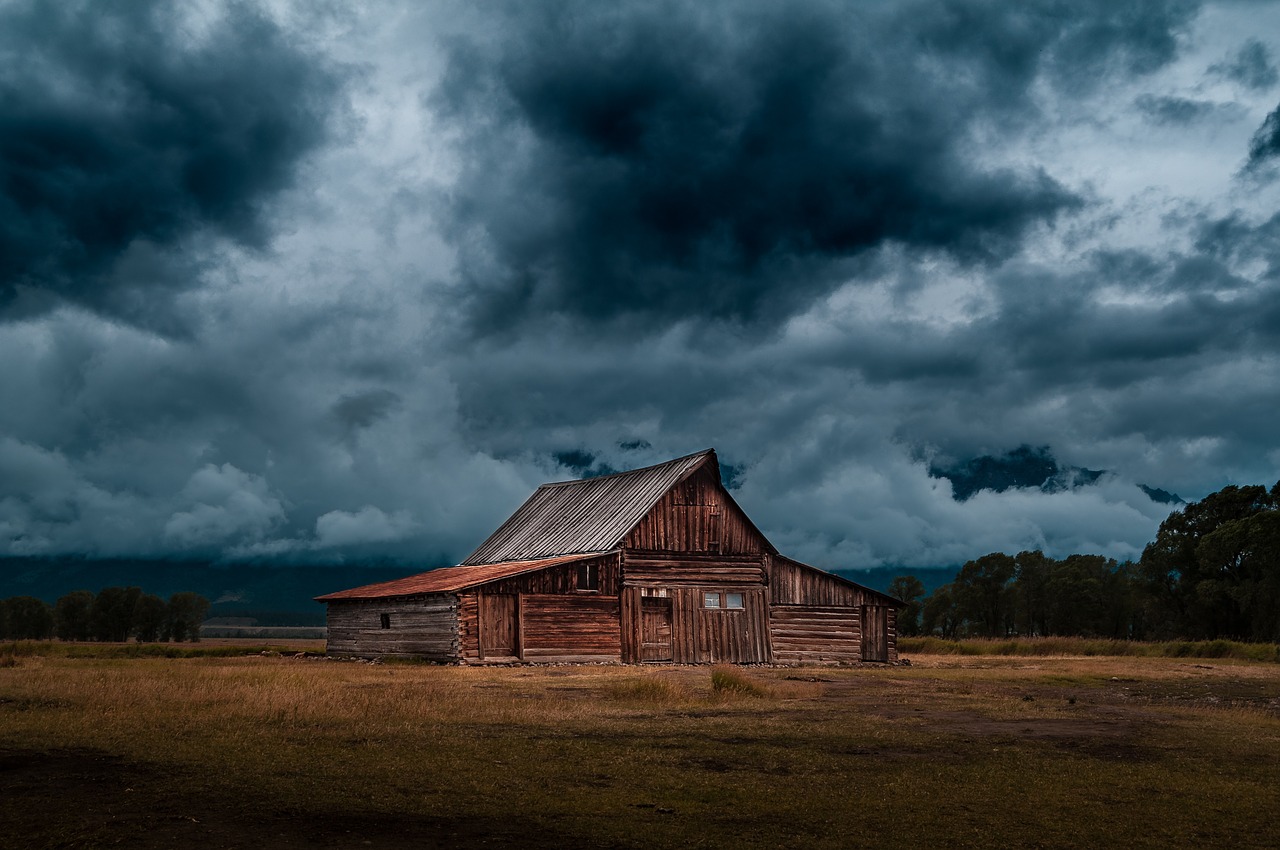
Kenya’s tourism & the gathering storm
The digital age has completely changed the face of modern travel. The collapse of the Thomas Cook travel company a couple of months ago should not have come as a surprise https://www.business-live.co.uk/enterprise/thomas-cook-collapse-finance-happened-16964473. If Kenyan travel companies didn’t wake up to it at that time, they need to do so now. Thomas Cook (TC) is the closest analogy to the Kenyan tourism sector; a 19th and 20th century business model, that couldn’t survive in the 21st century.
TC’s inability to adapt to modern travel needs
The trajectory of the Thomas Cook saga was evident from 1994. That it would collapse, should not have come as a surprise, given the patterns of the last two decades.
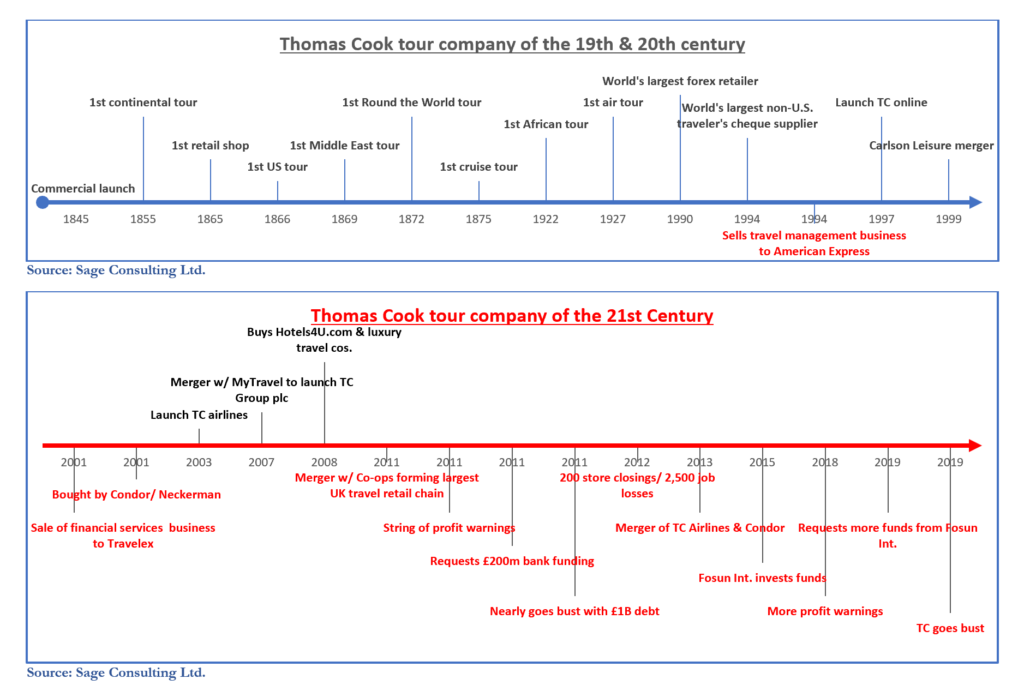
TC’s series of blunders since 1994, were when they started selling off their profitable travel management and financial services businesses. This in favour of consolidating their wholesale tour packages business. Kenya’s tourism industry has similarly clung onto a tour package model, controlled by overseas wholesalers and local destination management companies (DMCs), despite all the signs of changing needs of the modern travel industry.
Kenya’s tourism trends
So, will Kenya’s tourism industry keep its head in the sand, like Thomas Cook, or wake up to the urgency to adapt to modern travel trends and needs? Let’s take a look at some of Kenya’s tourism numbers over time.
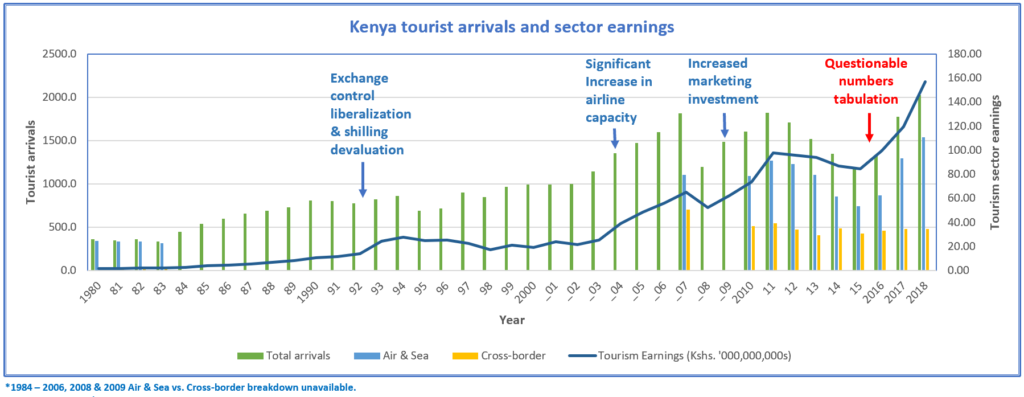
I’m sure you’ve all heard the saying, ‘Something’s rotten in the state of Denmark’. Kenya’s tourism statistics made sense up until 2011/12. A fishy smell then began to emerge in 2012/13. I have a simple philosophy with numbers: when they start to depart from the norm, or from common sense, just know that they have been “massaged”. For the first 3 decades that I’ve tracked, the correlation between tourist arrivals and tourism sector earnings were consistent and in sync. Then strangely, in the last 7 years tourism sector earnings have somehow made a quantum leap. This is not the issue to dwell on in this piece, but more importantly a symptom that the underlying dynamics of Kenya’s tourism sector are being covered up. So, let’s compare another set of variables for verification and deeper insight.
Kenya tourism’s perfect storm
Sebastian Junger’s 1997 novel, The Perfect Storm, and Wolfgang Petersen’s movie version of the same name in 2000, best typified a perfect storm. It is a particularly violent storm caused by the coming together of a combination of adverse meteorological factors. Kenya’s tourism faces a similarly perfect storm in that context of election cycles, terrorism incidences, an archaic industry structure, a lack of industry proactivity in responding to global trends, and declining hotel bed occupancy.

As the storm builds… 
…will Kenya’s rickety, old boat survive?!
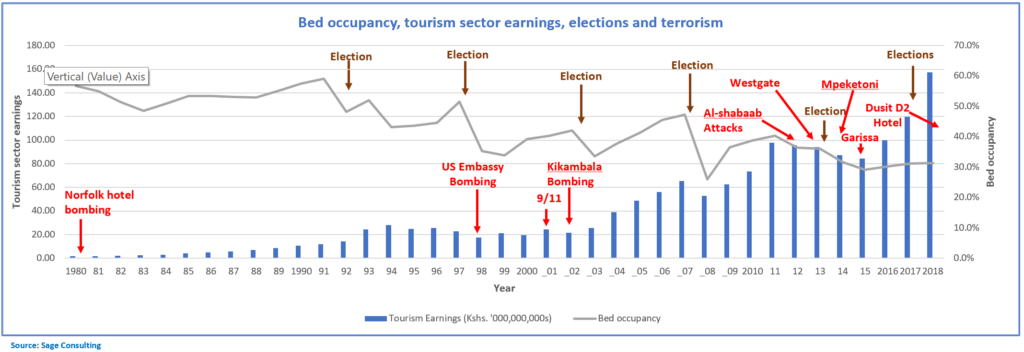
Kenya’s travel industry focuses on the election cycle effect, and both actual and potential terrorism attacks as key impediments to Kenya’s tourism. However, you must question a country’s data, when conflicting patterns are evident. Questioning doesn’t mean you’re saying they are wrong. It’s more so the need to unearth the real truth, in the context of the deeper story. Would you be confident in a business model that has shown such a long term decline in occupancy percentage of total beds?
And it’s not too late to make a change. I believe there is ample evidence of the first two factors not being fatal to a country’s tourism. However, it is the last 3 that are killers. Let’s look at each one.
Election cycles
Kenya can learn from countries like Thailand and India, which have volatile election cycles and consistent political conflict. That they are still able thrive comes from a clear tourism strategy, globally desired attractions, perceptions of tourism being valued and government goodwill. https://www.dailymail.co.uk/travel/article-2550899/Thailand-travel-advice-Violence-mars-Bangkok-elections-tourism-chiefs-say-business-usual.html
The commitment and seriousness of government to insulate its tourism from politics, makes its tourism product resilient. From diverse, beautiful destinations away from political hotspots, to magnificent hotels, historic temples and mouthwatering cuisine, there is a lot to make the destination worth it, despite the politics.
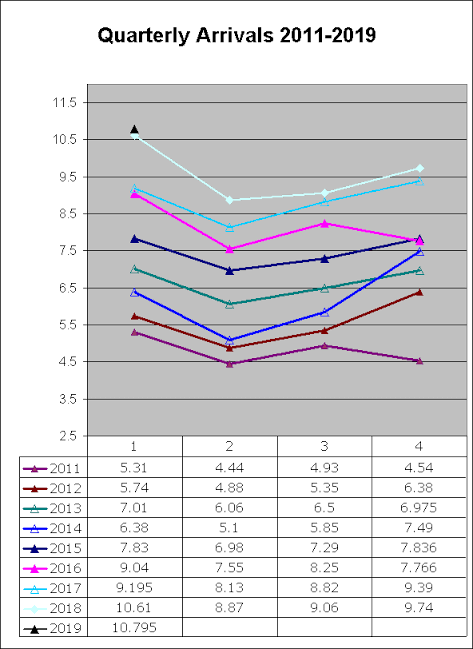
Source: Thailand Dept. of Tourism
Destination Thailand has a modern travel marketing and structural approach. Its https://www.tourismthailand.org/home portal is modern, interactive and gives the traveler confidence in planning their trip, without gatekeepers.
Terrorism incidents
Egypt’s terrorism has been more of a threat to its tourism than Kenya’s, in that it predominantly targets tourists. Be it Luxor, Sharm El Sheikh or the Sinai Peninsula attractions, it has been one tourist attack after another. The Egyptian government response has been more serious, both in security and infrastructural action, but also in monetary investment in the recovery process, to renew visitor confidence. https://www.wttc.org/about/media-centre/press-releases/press-releases/2019/travel-and-tourism-in-egypt-shows-immense-strength-and-recovery-in-2018-says-new-research-by-wttc/. We can now see that their recovery has recently been exponential and returning back to their peaks. Their reported numbers are also more consistent, giving all more confidence. It’s simply building confidence upon confidence, despite the setbacks.
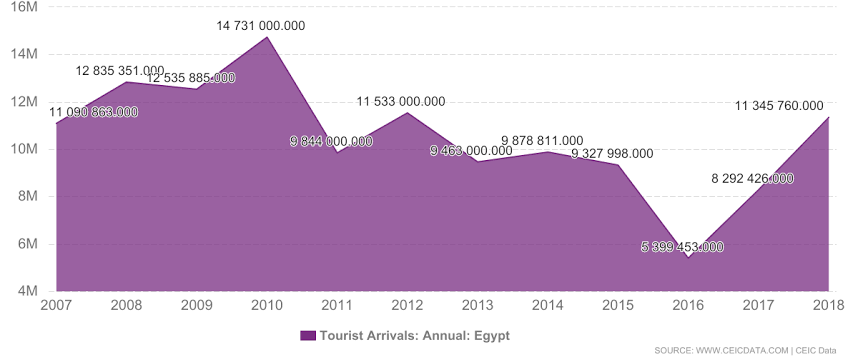
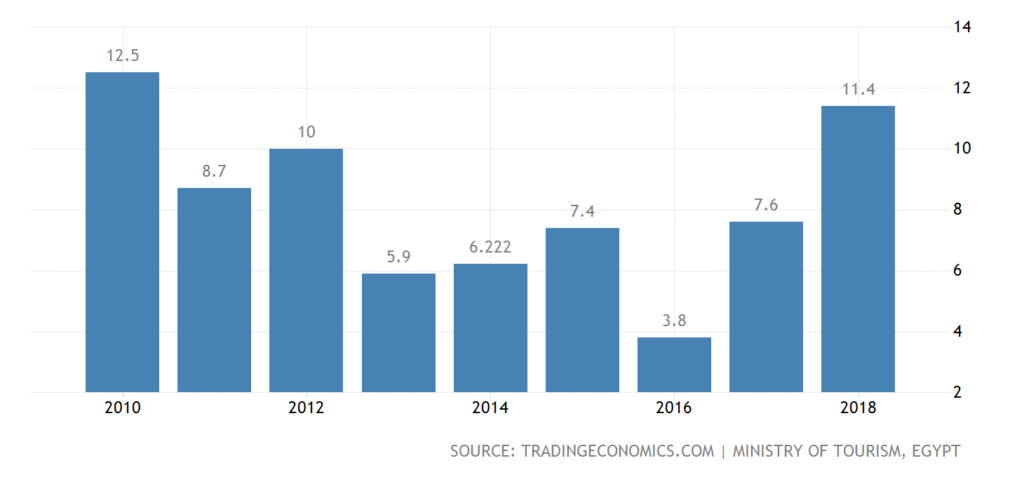
Kenya’s terrorism incidents alternately have more frequently and devastatingly been against its regular citizens. Scores more Kenyans died in attacks like Mpeketoni, Westgate Mall and Garissa University, than tourists in the Kikambala and Dusit D2 hotels attacks. However, what is instructive throughout, was the Kenya government’s response. They looked at best inept, and at worst incompetent, uncaring and corrupt.
Archaic industry structure
Kenya’s industry structure mirrors the Thomas Cook trajectory of the past 2 decades. An overdependence on overseas wholesalers; ageing, crumbling resorts; outdated adjustment to the digital world; and uncompetitive dynamics in buying its product. The bread and butter business has been provided by TC, Tui, Virgin Holidays, Tauck and Cox & Kings, amongst other overseas travel wholesalers. While Kenya continues to put all its eggs in this outdated basket, the rest of the world has moved on to the likes of Expedia, Bookings Holdings, American Express Travel, AirBnB and direct flight and hotel bookings. https://www.inboundreport.com/2018/07/24/the-top-20-companies-that-dominate-the-world-of-travel-agencies/. Holding on to this model is remaining analogue, while the world goes digital.
Failure to adapt to global trends

Related to this, the world has moved on from tourists to travelers. Tourists were almost like cattle; bundled into tour groups, to be herded around the world together. Travelers are more independent, and hold the power of determining their travel, at their fingertips. Millenials and Gen Xers have become the leading travel age groups. They use digital platforms to book their travel and are even increasingly showing the way for Baby Boomers. https://groupstoday.com/business/404-travel-trends-by-age-demographic. The Kenyan milk run model of being held captive in a hotel or lodge, being kept idle for most of the day, only being entertained by kitsch traditional dancers; then being stuffed with sumptuous food and drink, just isn’t appealing to the new traveler.
Declining hotel bed occupancy
As illustrated in Table 3 above, for bed occupancy to drop from 59.1% to 31.4% in a span of less than 30 years, would be a serious concern for Kenyan tourism investors. It simply isn’t a good look. And this against the backdrop of the growth of Airbnb. Granted, additional hotel beds have grown from about 10,000 to just under 27,000 over the last 15 years. However, take note that this beds growth is across all bed classes, with true 5 star beds being limited to Nairobi, Mombasa and a few, spotty safari lodges, and not numbering more than 1,000 beds.
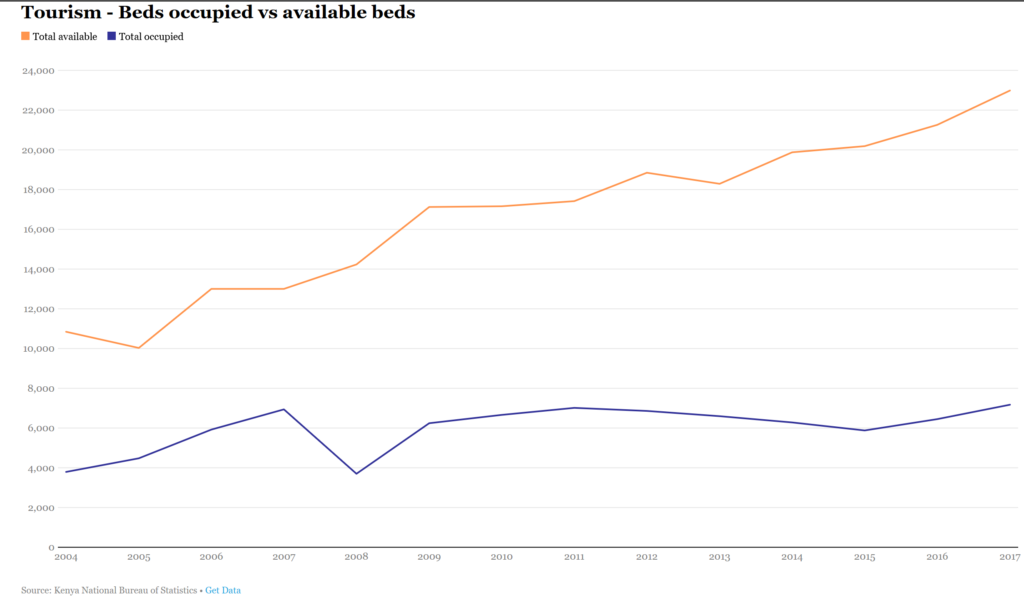
The concerning thing for any potential investor is the fact that, real numbers of beds occupied has remained stagnant at about 5,000 over this period. And that is the state of Kenya’s tourism – stagnant. And many of those hotels need to be mothballed. Or as the head of one of tourism companies once said, ‘Hollywood and Bollywood need to be invited to use many of these hotels as sets for their, shoot ’em up, bomb ’em up movies’.
The keys for future sustainability: modern travel
So the keys for Kenya’s future tourism sustainability are simple:
- Election cycles: Learn from Thailand and India. But NOT with politician benchmarking trips, and endless, actionless talking-shop conferences.
- Terrorism mitigation and recovery: Learn from Egypt. Ditto.
- Archaic industry structure: Simply change alongside the world, become digital, and make it easy for the new travel company leaders to sell your destination and products.
- Adapt to global modern travel trends: Understand the new travelers, offer what they need/ want, become digital, and make it easy for Millenials and Gen Xers to buy your destination and product.
- Bed occupancy viability: Put real hotel classification standards and quality in place, mothball all the obsolete hotels and introduce more iconic hotels and lodges.
- And some final food for thought can be found at https://bizlifesmarts.com/biz-built-to-last.
For strategic advisory that will leverage uncommon sense and drive your bottom line, get in touch with us on [email protected]
Follow on:



